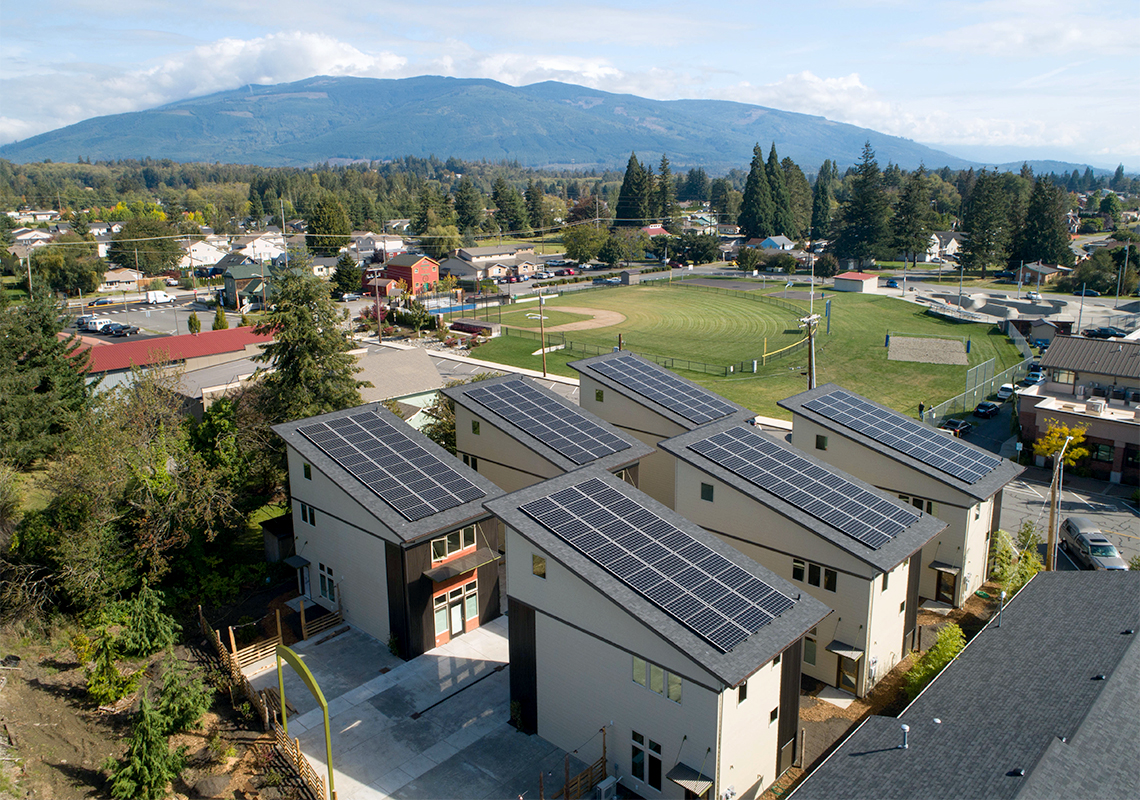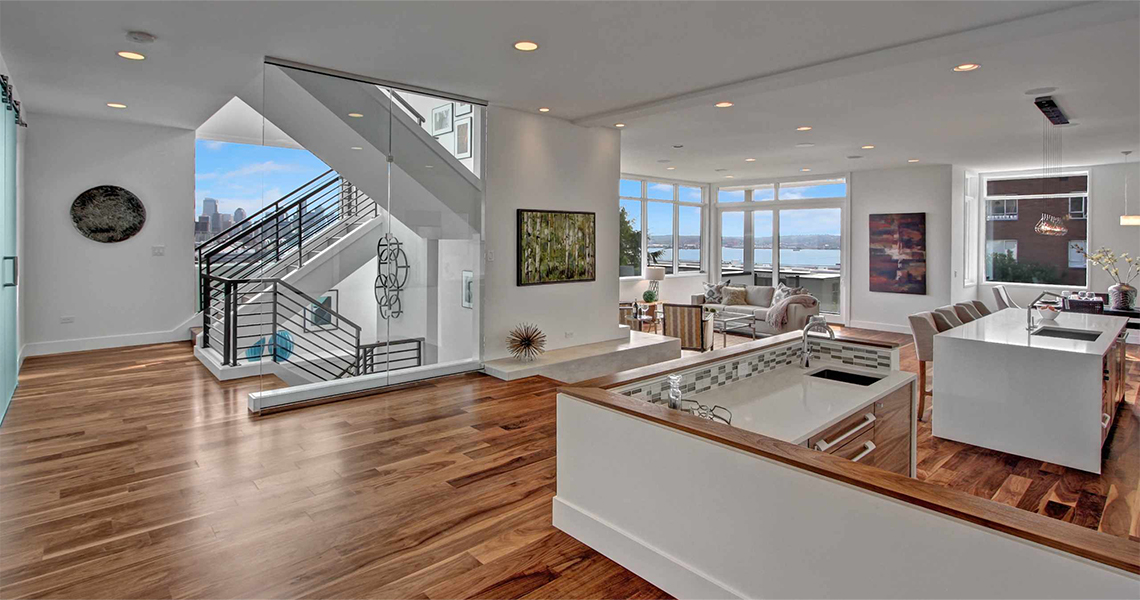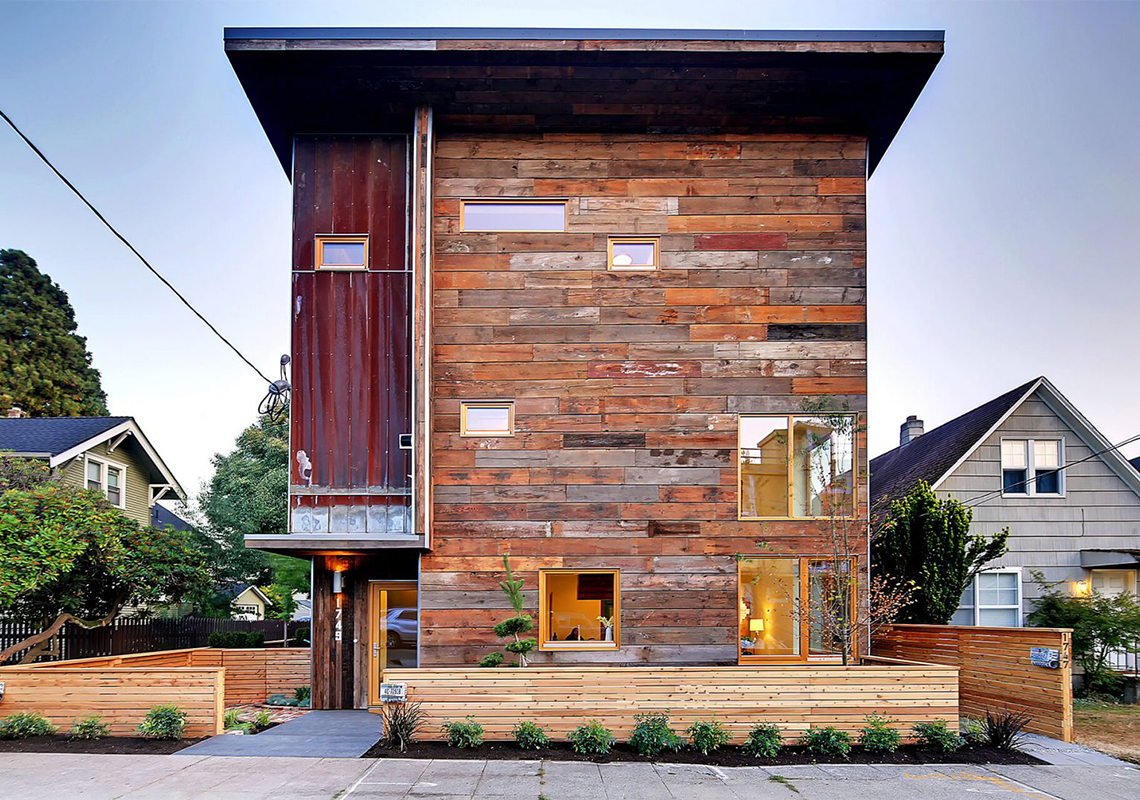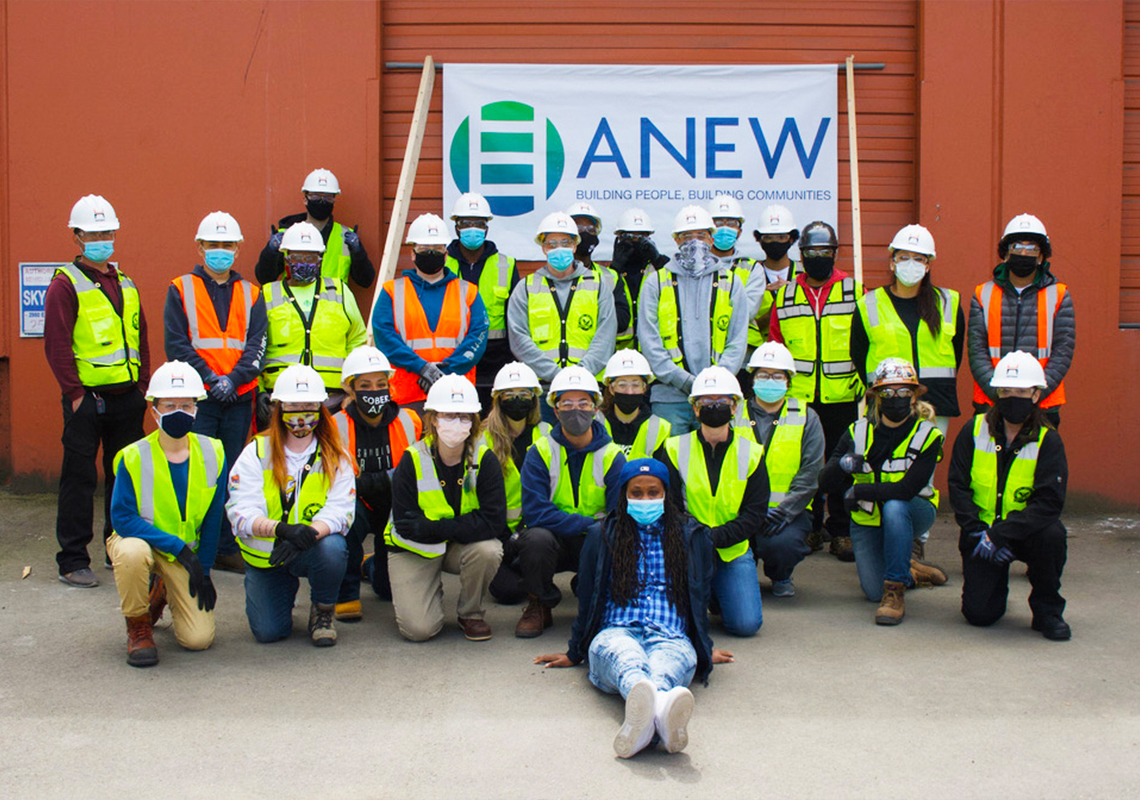In Washington State, the building and energy
codes are updated in a 3-year cycle. When the state codes change, typically
requiring a higher level of performance and energy efficiency, Built Green must
update its checklists to ensure Built Green certifications are representing beyond-code,
innovative, and high-performance building practices. Every credit is assigned a point value based on its level of impact, difficulty or cost to implement. Built Green develops its checklist credits with advisory from leading industry professionals to navigate state code changes, technological advancements, and leading-edge best practices. To help distinguish these
changes, Built Green checklists are assigned a version number for the year they
were implemented. You can see a summary of the previous 2017/2018 version here. In 2021, we released updates for our new construction
checklists to respond to code changes.
Regardless of the checklist version, there are four different Built Green certification
levels, referred to as star levels, that builders can choose to achieve. This
allows builders the flexibility to choose the star level that best matches their
experience level with green construction practices, their or their client’s goals,
and the project’s site context. The Built Green checklists are designed to
encourage green development wherever possible using a holistic approach. This
approach goes beyond energy use and takes water use, indoor air quality, site, materials,
and community impact into consideration. This post will walk you through the
various Built Green certification levels available and help you understand the
differences between them.
Energy
The first thing many are familiar with when it comes to high
performance homes is energy efficiency. Built Green requires notable performance
differences for each certification level. The table below provides an overview
regarding the energy performance requirements.
|
Built
Green Energy Requirements by Star Level
|
|
3-Star
|
Performance to be at least
6% improvement above WA State Energy Code
|
|
4-Star
|
Performance to be at least 12%
improvement above WA State Energy Code
|
|
5-Star
|
Performance
to be at least 18% improvement above WA State Energy Code; PLUS
pre-wired for any future solar PV installations (single-family) or
installed solar PV (multi-family)
|
|
Emerald Star
|
Demonstrate net zero energy performance
over the course of a year; PLUS Building is 100% electric, no combustion
fuels used inside the building.
|
|
Net
Zero Energy Label
|
Any Star level is eligible: Demonstrate
net zero energy performance over the course of a year; PLUS building is 100%
electric, no combustion fuels used inside the building.
|
The
Built Green checklists provide multiple ways for builders to demonstrate
improvements in energy use, but each option is designed to achieve the
performance listed in the above table. An example of how a builder can increase performance is a building’s thermal envelope—the wall that provide a physical separation between the exterior
environment and the interior of a building. If the thermal envelope is more insulated and
air-tight (i.e., less drafty), then the building will require less energy to provide
thermal comfort to occupants. Using the Built Green checklist, builders can demonstrate
how they have improved the energy performance of the home to provide greater
thermal comfort while reducing operational costs to the occupant.
In
addition to the home’s design, installing Energy Star rated appliances, heat
pump water and space heaters reduce the energy required by the largest energy
consumers in a home. Using passive solar design and orientation, light-colored
interior finishes, and energy efficient lighting can further improve a home’s
performance and comfort. Using a combination of features, builders can achieve
high levels of performance, while increasing comfort and decreasing utility
bills for occupants.

5-Star, NZE Label homes by Martha Rose Construction
For
5-Star and Emerald Star Built Green homes, additional factors come into play.
For example, any Built Green home could be oriented on the lot in a way that
will optimize passive solar strategies, but 5-Star single-family homes must
provide a designated rooftop location for the wiring and controls for any
future solar photovoltaics, while multi-family buildings must have a minimum
amount of solar PV installed. Emerald Star is required to achieve net zero
energy (NZE)—meaning the building produces as much energy as it consumes in a
year. To achieve NZE the building must use clean energy production through wind
or solar, with the energy production either on site or within a quarter of mile
of the lot.
Site and Water
Energy consumption might
be the first thing that comes to mind when people think of high-performance homes, but it
isn’t the only aspect. Site requirements ensure the footprint of the house has
a minimal environmental impact. For example, one of the requirements for a
4-Star home is planting native, pollinator-friendly, or drought resistant
plants, while also limiting thirsty turf grass to 25% or less of landscaped
areas. This allows for the homeowner to enjoy beautiful landscaping while saving water and money through lower utility bills. 5-Star homes take
stormwater management planning a step further by using pervious paving materials
for at least 1/3 of the total area for driveways, walkways, and patios.
Total water use reduction in Built Green homes is made possible through EPA Water Sense and Energy Star low-flow fixtures and appliances, as well as landscaping that minimizes irrigation needs. Similar to home energy scores, the Water Efficiency Rating System (WERS) and Water Rating Index (WRI) are water efficiency scores that can be used to show a home’s water use reduction. The following is a table that provides an overview regarding Built Green’s water conservation requirements:
|
Built
Green Site and Water Requirements by Star Level
|
|
3-Star
|
Total water use reduction of
at least 30%
|
|
4-Star
|
Total water use reduction of at least 40%
|
|
5-Star
|
Total water use reduction of
at least 50%; PLUS manage 60% stormwater on-site (multifamily)
|
|
Emerald Star
|
Occupant water use reduction of at least
70%; PLUS manage 100% stormwater on-site (single-family)
|
Indoor Air Quality
Indoor air quality has an impact on the health of the environment, construction
employees, and occupants of a home. All Built Green star levels are required to
use materials, sealants, adhesives and finishes that do not emit harmful levels
of added formaldehydes and volatile organic compounds that can be detrimental
to occupant health. 4-Star homes take it a step further and recommend actions
such as separating or air sealing the garage with an automatic exhaust fan to
avoid motor exhaust from entering the home. Built Green recognizes another
major contributor to poor indoor air quality that often escapes attention – shoes.
There are numerous checklist credits (required for 5-Star Homes) dedicated to
decreasing the number of pollutants being tracked into Built Green homes by
shoes such as designated shoe-removal areas, enclosed vestibules, permanently
installed track-off mats, carpets, and/or shoe grates at the principle entryway
of a building.

4-Star home by Isola Homes
Materials
The
materials used in the project and how efficiently they are utilized is also
incredibly important and considered when assigning a Built Green star level.
Every star level requires builders to post and implement a recycling plan and some
form of waste reduction and recycling to ensure materials will not be wasted. 5-star
and Emerald Star home require ensuring material sustainability and efficiency
by requiring at least 10 materials to include salvaged or recycled content.

Emerald Star home by Dwell Development
Embodied
carbon in buildings is the greenhouse gas emissions associated with building
construction that arise from extracting, transporting, manufacturing, and
installing building materials on site, as well as the operational an
end-of-life emissions associated with those materials. Built Green 5-Star and
Emerald Star homes must calculate the embodied carbon through approved methods.
Built
Green uses a House Size Matrix to assign increased value to building smaller
more resource efficient homes. Smaller than average homes receive additional
points added to their final total to achieve a targeted star level. Larger than
average homes, regardless of star level, require additional steps to address
their increased material usage and environmental impact. Builders can choose
between earning additional materials credits or calculate the new building’s
embodied carbon baseline and show at least a 10% reduction.
Equity and Social Justice
The three pillars of sustainability are planet, profit, and
people. Most often in green construction certifications, the people aspect of
sustainability is overlooked. Built Green recognizes as we commit to working
for equity and inclusion in housing and the building trades, we must value the
voices, experiences, cultures, knowledge, and multi-dimensionality of all people,
including community members impacted by discrimination, bias, and systemic barriers.
Understanding their perspectives is essential to removing these barriers.
Creating these spaces of belonging and centering equity in turn provides
economic and growth opportunities, reduction in turnover costs, and increased
applicant labor pool for builders to capitalize on. This section is intended to
support architects, builders, and developers in their efforts to promote equity
and inclusion, one home at a time. With each Built Green star level, the
qualitative positive impact on the community increases. As the builder
progresses in each star level they must increase their efforts in universal
design, community planning, equitable sourcing, and create an equity and social
justice plan for each project.

ANEW PACE Training Program
Why Certify with Built Green?
While
an Emerald Star-certified home is greener with a reduced environmental impact
than a 3-Star Built Green home, it is important to remember both homes are
designed with the environment, community, and the inhabitants in mind. 3-Star
certification is a great way for builders new to green building to learn more
about the Built Green program and then begin to ramp up the certification
levels they aim for.
Every
star level builds upon the next to create greener homes. The needs of the
builder, the homeowners, the community, and the environment are all considered
when any Built Green home is constructed. Providing builders with the
flexibility to choose which features to incorporate into the home increases the
probability that more builders will choose to build greener homes. The star
level tiers help provide clarity on how green each project is.